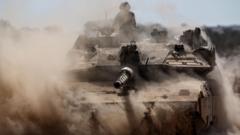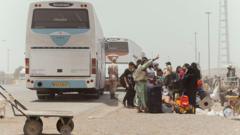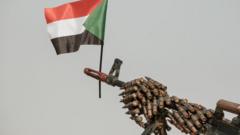In a recent wave of violence, Iran is choosing strategic restraint following U.S. attacks on its nuclear capabilities, hinting at a nuanced desire for negotiation amidst rising tensions with the U.S. and Israel.
A Dance of Restraint: The Complex Dynamics of the Israel-Iran Conflict

A Dance of Restraint: The Complex Dynamics of the Israel-Iran Conflict
As hostilities escalate, Iran navigates a delicate response to U.S. airstrikes, suggesting a potential for negotiated peace.
On June 23, 2025, the geopolitical landscape surrounding the Israel-Iran conflict took a dramatic turn. Following recent U.S. airstrikes on Iranian nuclear facilities, Iranian leadership, led by Ayatollah Ali Khamenei, convened an emergency meeting of the Supreme National Security Council to formulate a response. This flurry of diplomatic maneuvering indicates Iran's intent to retaliate while simultaneously seeking to avoid full-scale war.
The U.S. strikes, which targeted three primary nuclear sites, were part of a broader strategy to weaken Iran's military infrastructure. The Iranian regime faced a critical need to project strength domestically and internationally. However, as sources close to the Supreme Leader indicated, any retaliation was to be carefully calibrated to prevent escalating hostilities with the United States.
Iran’s Revolutionary Guards pinpointed the Al Udeid Air Base in Qatar for retaliation, considering it not only the largest American military facility in the region but also located in a country known for its alliance with Iran. The choice implied a dual strategy: demonstrating prowess while maintaining a cautious approach in hopes of keeping the fallout limited.
Through this crisis, Iran has focused on crafting a narrative of resilience and victory despite previous losses. Even as Iranian media celebrated the reaction to the U.S. assault, analysts suggest that both Iran and the United States may now have an opportunity to negotiate a cease-fire that acknowledges their respective narratives as 'victorical.'
This complex interplay of military aggression and strategic restraint highlights a critical moment for Iran, Israel, and the United States. As each nation assesses its position and potential outcomes, the path toward de-escalation becomes increasingly important. The ramifications of these actions will shape not just regional dynamics but also the broader international political landscape in the months and years to come.




















